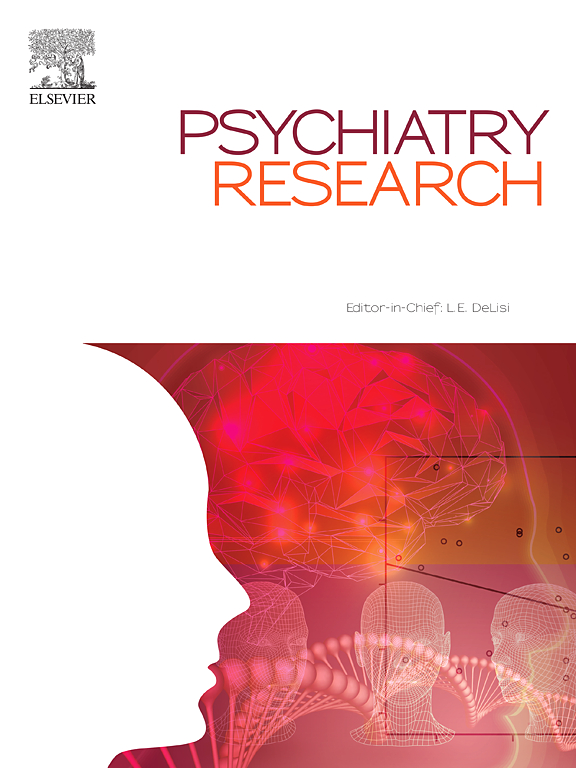Comparative efficacy of multiple non-invasive brain stimulation to treat major depressive disorder in older patients: A systematic review and network meta-analysis study based on randomized controlled trials
IF 4.2
2区 医学
Q1 PSYCHIATRY
引用次数: 0
Abstract
Background
Major depressive disorder (MDD) is prevalent among older patients and is frequently associated with cognitive decline and a reduced quality of life. Non-invasive brain stimulation (NIBS) techniques show promise for treating MDD, but their comparative efficacy and safety older populations remain unclear. This study aimed to compare the efficacy and cognitive effects of various NIBS techniques in treating MDD in older patients.
Methods
We searched the PubMed, EMBASE, Cochrane Library, and Web of Science core databases from inception to March 2024. Seventeen randomized controlled trials (RCTs) were included.
Results
Surfaces under the cumulative ranking curve (SUCRA) values were used to rank the interventions. The SUCRA rankings for the Hamilton Depression Rating Scale (HDRS) outcomes indicated that repetitive transcranial magnetic stimulation (rTMS) (89.0 %) had the highest efficacy, followed by transcranial direct current stimulation (tDCS) (68.7 %). rTMS demonstrated significantly superior efficacy compared with bilateral electroconvulsive therapy (BL ECT) and right unilateral electroconvulsive therapy (RUL ECT). Theta burst stimulation (TBS) had the highest response rate (69.6 %), followed by rTMS (61.8 %). Based on the Mini-Mental State Examination, rTMS (86.4 %) ranked the highest, with RUL ECT showing significantly better outcomes than BL ECT.
Conclusion
NIBS, particularly rTMS and TBS, may offer effective treatment options for older patients with MDD. Further research with larger sample sizes and longer follow-up periods is required to validate these findings and inform clinical practice.
多次无创脑刺激治疗老年患者重度抑郁症的比较疗效:基于随机对照试验的系统评价和网络荟萃分析研究
背景:重度抑郁症(MDD)在老年患者中普遍存在,通常与认知能力下降和生活质量下降有关。非侵入性脑刺激(NIBS)技术显示出治疗重度抑郁症的希望,但其相对疗效和老年人的安全性仍不清楚。本研究旨在比较不同NIBS技术治疗老年重度抑郁症的疗效和认知效果。方法:检索PubMed、EMBASE、Cochrane Library和Web of Science核心数据库,检索时间为建库至2024年3月。纳入17项随机对照试验(RCTs)。结果:采用累积排序曲线下曲面(SUCRA)值对干预措施进行排序。汉密尔顿抑郁评定量表(HDRS)结果的SUCRA排名显示,重复经颅磁刺激(rTMS)(89.0%)的疗效最高,其次是经颅直流电刺激(tDCS)(68.7%)。与双侧电惊厥治疗(BL ECT)和右侧单侧电惊厥治疗(RUL ECT)相比,rTMS的疗效显著优于rTMS。θ波爆发刺激(TBS)的反应率最高(69.6%),rTMS次之(61.8%)。基于迷你精神状态检查,rTMS(86.4%)排名最高,RUL ECT的疗效明显优于BL ECT。结论:NIBS,特别是rTMS和TBS,可能为老年MDD患者提供有效的治疗选择。进一步的研究需要更大的样本量和更长的随访期来验证这些发现并为临床实践提供信息。
本文章由计算机程序翻译,如有差异,请以英文原文为准。
求助全文
约1分钟内获得全文
求助全文
来源期刊

Psychiatry Research
医学-精神病学
CiteScore
17.40
自引率
1.80%
发文量
527
审稿时长
57 days
期刊介绍:
Psychiatry Research offers swift publication of comprehensive research reports and reviews within the field of psychiatry.
The scope of the journal encompasses:
Biochemical, physiological, neuroanatomic, genetic, neurocognitive, and psychosocial determinants of psychiatric disorders.
Diagnostic assessments of psychiatric disorders.
Evaluations that pursue hypotheses about the cause or causes of psychiatric diseases.
Evaluations of pharmacologic and non-pharmacologic psychiatric treatments.
Basic neuroscience studies related to animal or neurochemical models for psychiatric disorders.
Methodological advances, such as instrumentation, clinical scales, and assays directly applicable to psychiatric research.
 求助内容:
求助内容: 应助结果提醒方式:
应助结果提醒方式:


